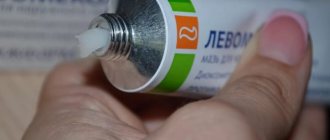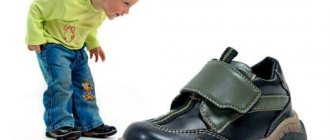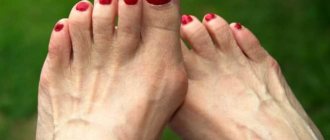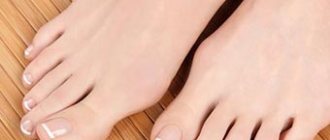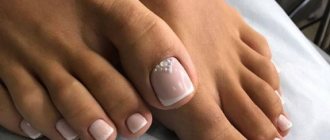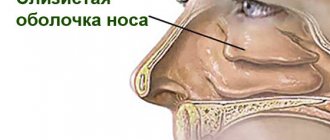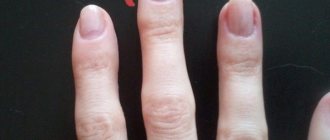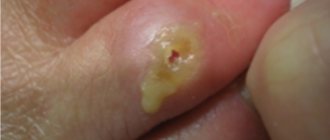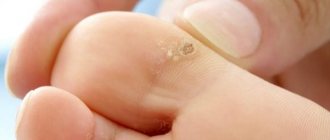Calluses are caused by friction against rough surfaces. The usual localization of calluses is the foot, heel area, and plantar area. A fresh callus forms as a watery blister. Usually, with proper treatment of the callus, complications in the form of suppuration rarely occur. In your case, the callus was first heated with baked onions, after which patches and cabbage leaves were used. A patch or cabbage leaf on a callus creates a greenhouse effect, creating a favorable environment for pathogenic microflora.
If the callus festered, but was covered and leaking, then infection in the absence of regular antiseptic treatment is quite possible. An opened callus becomes infected even more often, it all depends on the method of opening. Whether the callus was opened with a needle or torn - the further clinical development of the situation may depend on these nuances.
The appearance of pus in a callus is the result of the immune system fighting pathogenic microflora. The composition of pus includes leukocytes and killed microbes. A purulent callus with a progressive course literally melts the mucous membranes under the rough skin of the foot. Purulent foci resembling an ulcer form. The color of the exudate varies from milky to greenish-yellow. If a blister with pus is pierced again, even if all measures are taken, then the appearance of a new blister is possible after the first similar damage.
Calluses that have been opened and treated with all kinds of antiseptic solutions can also fester. This occurs as a result of repeated stress on the damaged area of the skin. Work shoes, as in your case, and the continuous work process most likely led to the inflammatory process.
Why does pus form?
If the callus has festered, it is due to a bacterial infection that has penetrated through a wound on the skin. Most often, this occurs as a result of puncturing the water bladder and neglecting antiseptic agents (the dropsy must be disinfected after the puncture). In the same way, a dry growth with a stem can fester if, after carelessly cutting off its upper part, the wound is not treated with an antiseptic.
After the infection penetrates, the leukocytes contained in the blood begin to fight the “enemy agent” and some of them die - this is how purulent exudate is formed (the dead leukocytes are pus). Without adequate treatment, suppuration along with the blood flow spreads higher.
If a callus on the foot festers, it can lead to embolism, sepsis, and with prolonged inactivity, provoke gangrene.
Knowing the characteristic symptoms that indicate suppuration, you will recognize the problem in time and prevent extensive damage.
Types of calluses
There are a number of types of calluses. Most often, calluses are localized on the heel. The classification of calluses is presented as follows:
- calluses are soft;
- solid.
The callus is festering.
Soft calluses are divided into:
- watery;
- bloody;
- festering.
A water callus is an exudative element, a cavity containing fluid. Favorite location is on the heel. These types of calluses are most common as a result of excessive friction. Popularly called "dropsy". Water calluses are easy to treat. It will be necessary to remove the fluid from the bladder, which causes inflammation and discomfort. Achieved by carefully puncturing the bladder. After the puncture, the liquid will flow out, the resulting wound should be treated with an antiseptic solution, and if possible, bandage the area to prevent infection. It is permissible to apply wound-healing ointments, for example, Levomekol, under the bandage on the legs.
Bloody calluses are rare and are predominantly localized on the upper extremities, often on the fingers. Tender areas are subject to excessive physical stress, bloody calluses are the result of intense physical labor. This form of calluses is more difficult to treat than watery calluses, and healing is much slower. With appropriate intervention, the process can easily be reorganized.
In the case of purulent calluses, which pose the greatest danger to general health, early treatment measures will be required. Pus is the result of infection, the penetration of pathogenic microflora into the wound. Suppuration of the callus leads to danger for the body. Purulent calluses cause severe pain; sometimes it is not possible to step on the affected limb. The treatment process is complex and lengthy.
Callus treatment
Characteristic symptoms
The following symptoms indicate that the callus has festered:
- the exudate (lymph) inside the dropsy becomes cloudy;
- when palpating the growth, pain occurs;
- swelling and redness appear around the lesion.
Next, the callus breaks out - a characteristic yellow-green exudate (pus) appears, the inflammation spreads higher, the leg swells, turns red, the pathological process is accompanied by an increase in temperature. If left untreated for a long time, the patient may develop a fever, and inflammation may reach the knee area, and very dangerous complications are possible.
Since the infection spreads throughout the body through the lymph flow, this is fraught with serious consequences that threaten human life. With independent or involuntary opening of a purulent callus, the risk of infection increases. Spreading over the surface, purulent exudate can penetrate through microtraumas and skin cracks, leading to re-infection and multiplication of the infection.
If the callus is festering, you need to start treatment immediately, since at the initial stage you can cope with the problem on your own.
Actions for inflammation
The main thing is to see a doctor as soon as possible. If this is not possible, try to take measures to prevent the possibility of infection spreading deep into the tissue. Required:
In addition to local treatment, you need to take anti-inflammatory drugs, for example, Serrata - removing toxic substances from the body, preventing further infection. Ibuprofen-based drugs have an anti-inflammatory and antipyretic effect, which is important if a person has already developed a fever.
The patient will require special nutrition. The body's forces are now aimed at fighting infection; food should not take a lot of energy to digest. The food is supposed to be light and at the same time nutritious in order to provide a person with the necessary substances for recovery. Fresh or boiled, baked fruits and vegetables, steamed fish, non-rich broths from chicken, rabbit, turkey, and fermented milk products are suitable. You should not eat junk food: fatty, fried, spicy, sour, alcohol - unhealthy food creates additional stress on the liver, called the body's main filter, the organ cleanses the body of toxins. Harmful substances are also excreted through urine and sweat. You need to drink more liquid: clean water, weak green teas, freshly squeezed juices, sugar-free compotes are suitable. It is worth giving up coffee, black tea, and sweet carbonated drinks - which are considered harmful.
It is important to eat foods that have antibacterial properties: onions, garlic (raw and processed, added to boiled or stewed dishes), parsley, ginger, walnuts, seaweed.
When sick, a person sweats profusely; it is necessary to take a shower on time, washing away dirt, allowing the skin to replenish the lack of oxygen and nutrients. Clothes must be replaced with clean ones. It is difficult and undesirable for a patient with an inflamed callus on his toe to move actively; instead of a shower, it is permissible to wipe the body with a damp towel. If a person prefers to shower, remember that the damaged area of skin should not be wetted. Do not make the water temperature too hot - this will increase blood flow and provoke the growth of bacteria. Bath is contraindicated.
Home treatment
What to do if you find suppuration - first, you need to eliminate the purulent exudate from the callus cavity. Use Vishnevsky ointment; this antiseptic drug effectively relieves inflammation and removes purulent contents. Saturate a gauze bandage generously with ointment and apply it to the affected area, secure with adhesive tape and leave overnight.
In the morning, treat the area of the abscess with Chlorhexidine or hydrogen peroxide and reapply the bandage. The procedure is repeated until complete healing.
In addition, if there is suppuration, you can use the antibacterial ointment Levomekol. A thin layer of ointment is applied to the affected surface, and a bandage is applied on top. This procedure with purulent callus should be carried out twice a day. It will take at least 3-5 days to completely cleanse the wound.
Remember, self-medication is only possible at the initial stage of suppuration. If the manipulations did not give the desired result, the callus continues to fester, then you should immediately consult a doctor and undergo outpatient or inpatient treatment.
Preventive actions
First, you should learn to choose shoes that suit a person's foot type. If your favorite pair of shoes periodically causes such serious consequences, but there is no strength to give up such beauty, then at a repair shop you can order a special gasket that is installed in the place where the rubbing occurs. Treating shoes with antiperspirants leads to a decrease in sweating, and, therefore, there will be no more calluses. Finally, every person should always have bactericidal patches with them, which can be applied if the first unpleasant and painful symptoms appear.
Qualified treatment
In a hospital setting, the doctor opens the festered callus, which has become inflamed, drains the wound, clearing the wound of purulent exudate, treats the affected area with antiseptics, applies a bandage, and then, as a rule, sends the patient home. However, the treatment does not end there. The patient is prescribed antibacterial drugs for local, oral or injection use (depending on the degree of damage). In addition, you should bandage and treat the wound with antiseptics daily.
If suppuration of an old dry callus with a core occurs, treatment is carried out in the following ways:
- drilling - a round bur with notches is used (the diameter of the instrument is selected by the doctor). Before the procedure, the patient’s feet are treated with an antiseptic, after which the core of the callus is drilled out using pinpoint movements. At the end of the procedure, the site of exposure is again treated with an antiseptic and antibacterial agent;
- laser - this innovative technique allows you to avoid infection of the wound, since at the same time the blood vessels are coagulated, so bacteria do not enter the blood. Healing is fast, maximum 4-5 days;
- liquid nitrogen (cryotherapy) – not only purulent exudate is frozen, but also pathological callus tissue, while healthy skin is not harmed. The method is effective and can be used at any stage of the disease.
In addition to official medicine, non-traditional methods of therapy (recipes from traditional healers) can help in the treatment of festering calluses.
How to treat?
If you try to do something on your own, such as draining the pus, you run the risk of only making the situation worse. Moreover, in the case when a lot of pus has accumulated in the sore, you may need to take antibiotics. Depending on how severe the infection is, your doctor will prescribe either oral medications or topical ointments.
Applying ointment to the affected area
Treatment of such sores comes in several types:
- The simplest thing is to drill the rod. The doctor chooses the diameter of the cutter, and drugs are dripped into the resulting wound to combat pus and pathogens.
- Laser treatment of calluses with pus. After laser removal, the wound heals no more than five days, whereas after drilling it will take a long time.
- Cryotherapy. Freezing the callus with pus is the most effective option. In this case, only pus and dead tissue are removed, and healthy cells are not affected at all. However, freezing is used only in particularly advanced cases, most often when a lot of pus has accumulated on the toes.
ethnoscience
There is debate about the effectiveness of alternative methods of therapy; representatives of official medicine oppose this approach to the treatment of suppuration and categorically recommend seeking help from a doctor.
Recipes of traditional healers in the fight against suppuration:
- Honey cake will help get rid of pus. Mix (1:1) honey and flour, knead an elastic dough, make a flat cake out of it, apply to the affected area and fix, leave overnight. After the purulent exudate is released, a bandage with an antiseptic should be applied;
- Apply the pulp of an aloe leaf to the festered callus overnight, this will help remove the pus;
- Lemon pulp can be used as an antiseptic; in addition, lemon juice softens the surface of the callus and helps remove pus. The lemon bandage is applied at night;
- soak cotton wool (150 ml of water, 1 tablespoon of salt) in a strong saline solution, apply it to the affected area, fix it, leave for 2-3 hours. The procedure will help remove purulent exudate.
Health is not something to joke about; even the smallest wound can cause serious problems.
Useful video
Watch this video about methods for removing calluses:
Similar articles
- Removing a finger bone: how is the operation performed...
Due to aesthetic imperfections and pain, it may be necessary to remove a finger bone. Surgery can be performed, as well as laser removal of the bunion on the big toe. The surgical method is inferior to the more modern one - laser. Read more - Laser removal of calluses (dry, core...)
Laser removal of calluses is carried out quickly and effectively. You can get rid of dry, stiff and interdigital toes. There are also alternative options for removing corns on your fingers. Read more
- “Cream against dry calluses” from the Belarusian...
Dry skin on the feet can appear for various reasons, both external and internal. If more cracks are added, treatment should be started immediately, otherwise walking will turn into torture. Why do dry feet on the toes, near the bone, peel and itch. What creams, ointments, baths, vitamins to use for dry feet. Read more
- Wound after laser wart removal: consequences...
A small wound after laser removal of a wart will be normal. How to treat a wound after a plantar or finger wart? How long does healing take, what consequences can there be? How to treat the consequences: swelling, pus, burn, if the wound is oozing, there is blood. Why doesn't the wound heal? Wound treatment after wart removal. Read more
